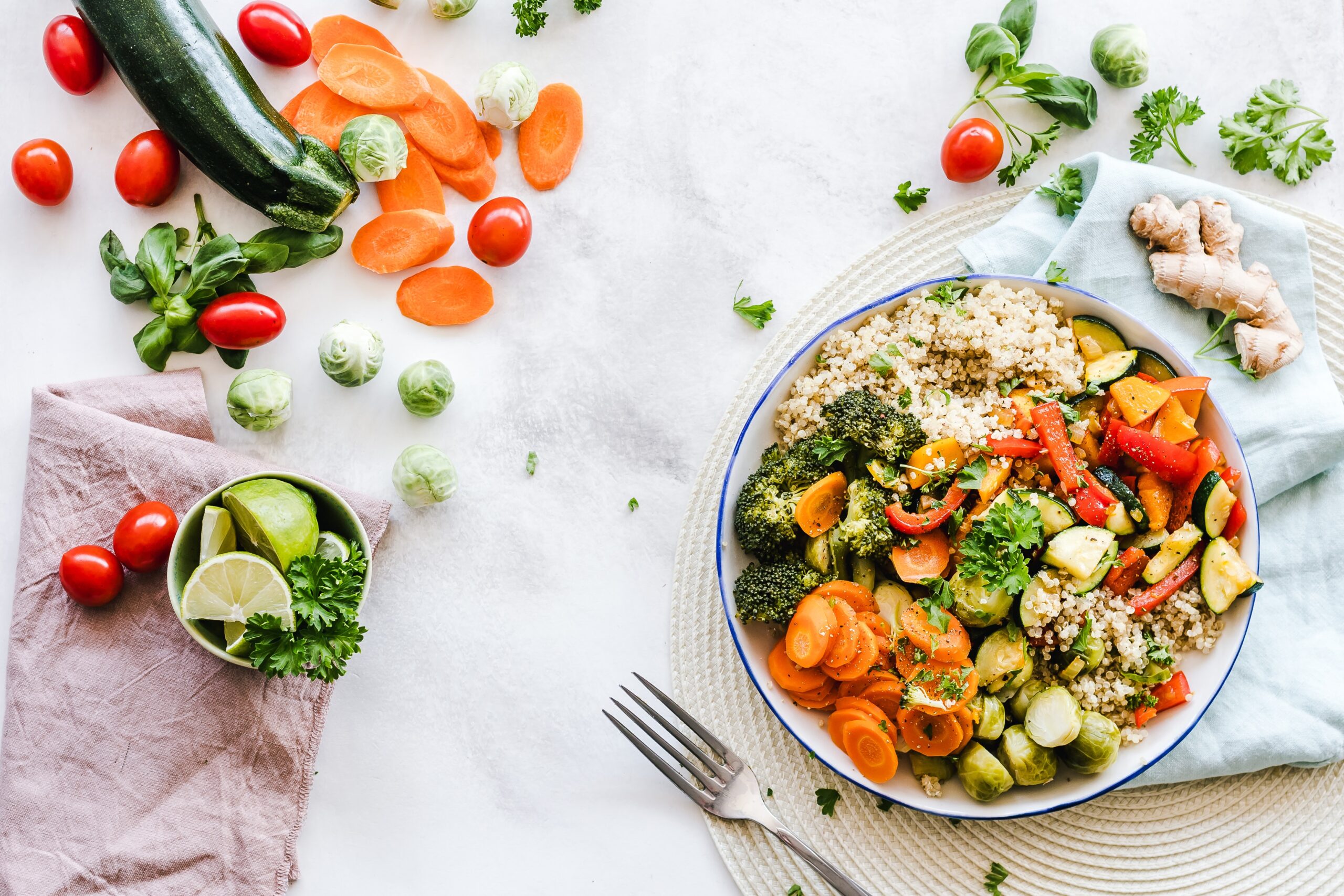
Committing to a healthy diet can be challenging. For example, college students may find it difficult to eat healthy due to busy schedules, heavy workloads, little money and limited dining hall options. Additionally, some employees may struggle to find healthy options in the workplace and grab fast food on their lunch break instead.
Thankfully, we can all help prevent these dieting challenges. Whether you’re looking to increase the productivity of college students on your campus or encourage healthy eating in the workplace, it’s important to promote healthy eating habits for everyone. This article will discuss the benefits of nutritious foods and some quick tips for healthy dieting.
It May Help You Live Longer
A recent study found links between life span and effective dietary patterns. Adding more whole grains, legumes and nuts — and reducing red and processed meats — may increase a person’s life .
Meanwhile, an unhealthy diet of processed foods — like chips, candy, artificially sweetened beverages and ready-to-eat microwavable meals — may for cancers and cardiovascular diseases, which can potentially shorten life span.
Lowers Disease Risk
Eating healthy foods is known to lower the risk of certain diseases, such as those listed below.
1. Type 2 Diabetes
People with Type 2 diabetes need to be especially mindful of salt and sugar intake, as well as fried foods with trans and saturated fats. By maintaining a healthy diet of whole foods like fruits, vegetables and grains, ��������:
- Manage their blood glucose levels.
- Maintain a healthy weight.
- Delay or prevent complications from diabetes.
- Keep their cholesterol and blood pressure within target ranges.
2. Heart Disease
A healthy lifestyle keeps cholesterol, blood pressure and blood sugar levels under control. This can help lower the risk of developing cardiovascular diseases and heart attacks.
�ճ���� consists of whole grains, fruits and vegetables, poultry, fish, nuts and vegetable oils, as well as alcohol in moderation. It’s also important to go easy on sugar, red and processed meats, refined carbs and sodium. In addition to a healthy diet, factors such as physical exercise, maintaining a healthy weight and not smoking are essential for heart disease prevention.
3. Cancer
While food hasn’t been shown to prevent cancer, healthy dieting plays a significant role in lowering this risk. Unhealthy dieting can lead to obesity or excess weight, which is like colon, kidney, liver, pancreatic, thyroid and stomach cancer. Here are some tips for reducing cancer with healthy eating:
- Try a Mediterranean diet with fruits and vegetables, whole grains, lean sources of protein and healthier fats.
- Eat five to nine servings of fruits and veggies daily.
- Limit added sugars such as salad dressings, crackers, bread and granola bars.
- Take vitamin D supplements.

Boosts Immunity & Gives You Energy
The proteins, carbohydrates and fats in food provide calories, which and fuel exercise. While minerals and vitamins themselves don’t provide energy, they help convert nutrients into fuel for energy, making them another important component of a healthy diet. The best foods for energy are those rich in complex carbohydrates, antioxidants, protein, vitamins and minerals, like:
- Blueberries
- Cantaloupe
- Mango
- Oatmeal
- Peppers
- Salmon
- Spinach
- Strawberries
- Sweet potatoes
- Tomatoes
Additionally, a balanced diet of vitamins and minerals, protein, iron and antioxidants . Meanwhile, deficiencies in certain minerals and vitamins like C, E, zinc and probiotics may weaken the immune system, increasing susceptibility to infection.
Improves Mental Health
In addition to physical well-being, healthy diets and mental health are closely linked. Healthy eating can improve the ability to focus, control mood fluctuations and even help with . Aim for a balanced diet of whole foods, antioxidants, fiber and folate to help boost mental health.
Meanwhile, junk food and depression can be closely associated. Consuming large amounts of fried food, meat, pastries, candy and refined cereals leaves people depressed or anxious. Try to consume these sparingly.
Helps Achieve & Maintain a Healthy Weight
Adequate intake of vegetables and fruits is known to . They’re low in calories and packed with vitamins, minerals, fiber and water. Their water and fiber concentration can help people feel fuller, so they can lower calorie intake without feeling hungry. This way, people can reduce the temptation to fill up on chips, candy and sugary sodas.
Quick Tips for a Healthy Diet
Next, here are some important tips to keep in mind for healthy dieting:
1. Stick To Healthy Whole Foods
Try to look for foods rich in antioxidants, vitamins and minerals. We’ve briefly mentioned some nutritious foods that make up a healthy diet, but as a reminder, below are some of the healthiest foods to eat:
- Raw nuts such as cashews, hazelnuts, pistachios and unsalted walnuts
- Fish, including herring, trout, mackerel and salmon
- Avocados
- Garlic
- Sweet potatoes
- Berries
- Oatmeal
- Wheat germ
- Beets
- Leafy greens like spinach, kale, lettuce, cabbage and collard greens
Additionally, remember to limit foods high in sugar, salt, fat and refined carbs. Some examples are chips, candy, white bread, soft drinks, bacon, sausage and sugary cereals.
2. Avoid Eating Out
It’s often tempting to turn to fast food because it’s quick, cheap and easy. However, limiting fast food and eating out is vital for maintaining a healthy diet. For this reason, it’s crucial to provide healthy options in workplaces and on college campuses — this way, people will be less tempted to grab a burger and fries at the nearest fast food joint.
3. Make the Food Presentable
When it comes to healthy dieting, good food presentation makes all the difference. Making your options look more attractive to enhance color and texture is a good way to encourage healthy eating among students and employees. Promote a colorful plate of fresh berries, leafy greens, rich nuts and grains to make the food look as good as it tastes. This can motivate them to give healthier food options a try.


